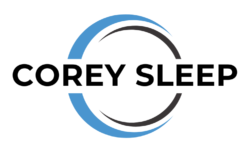Schedules mean stability and structure; both keys for productivity and mental health.
If you don’t have a routine, are depressed and anxious, have trouble sleeping, maybe don’t even have a job or something to get you up in the morning, things can spiral out of control pretty quickly (if they haven’t already). Working from home can present the unique challenge of having to establish a schedule on your own.
This post will be a kind of emergency kit for those of you who need to get their crap together fast. Where do I start? How do I bring some structure or order to my life NOW?
The rest of this post is chock full of ways you can bring order to your life each day. It might seem like a lot; don’t let yourself get overwhelmed. You could start with #1 of the morning routine and make that your goal for the next few days. You can pick and choose whatever you like; consider it a buffet table to take from.
I recommend starting with the morning routine, since the morning is a powerful way to set the tone for your day and, by extension, for your life.
Morning Routine
- Wake up @ 7:30 AM. Everyday. I get up when the alarm goes off and NEVER snooze. I’ve noticed a direct relationship between snoozing or lazing around in bed and decreased sleep quality and mood.
- Make your bed. Small win #2 and a way to build competence and self-respect. Remember: discipline overflows from one area of life to the next. Doesn’t need to be perfect, just respectable-looking. Takes me about 1 minute.
- Shower/Clean-up. Don’t overlook this – a shower is cleaning yourself, but it’s also a wakeup ritual that gets the blood flowing and a way of respecting yourself and your body. These little things – the ones that practice self-respect – go a long way.
- Wear something respectable – even if you’re not going out. Just because you may be working from home, doesn’t mean you get to be a slob. Again, small wins pour over into the rest of life, adding up over time. The same goes for losses. If you default to easy, sloppy living now, it’ll become default for later or for elsewhere. Keep your standards high.
While you’re at it, fold your pyjamas neatly on your bed and/or make sure that yesterday’s clothes are in the hamper or otherwise put away. - Make a protein-oriented breakfast. Some like to skip breakfast, but if you’re in a bad place, I don’t particularly recommend that. There’s some evidence that suggests that fasting can increase cortisol levels. If that’s true and you’re already stressed, it’s probably not ideal. Some protein will make sure you have a more steady-energy morning, whereas something like cereal or other refined carbohydrates might give you a mid-morning sugar crash.
- Make a hot drink. I really like my hot drinks, especially in the morning after breakfast. They help digestion and are something fun to look forward to on the days where I’m less stoked for work. Just keep those caffeinated drinks to 1 a day.
- Write out a quick plan for the day. I follow a “rule of 3” where I write down my 3 major priorities for the day. Sometimes I’ll add an “If I have time” list.
- Get to work. No sense delaying it. I like to start with my most cognitively demanding and creative work in the morning, since that’s when I’ve got the most energy. Whatever you do, don’t waste those early hours of the day. Set the tone.
8AM – 12 PM: Primary “knowledge” work time.
Your brain is usually at its best in the morning; therefore this is when you do your most cognitively demanding tasks.
Don’t forget to take breaks! Experiment and find what’s best for you. Sometimes, I only start hitting a stride at 45 minutes and don’t want to interrupt that. Other times, I do best if I break it up with some movement every 20-30 minutes.
Some kind of light movement throughout the day (at least once an hour) is recommended. Movement is medicine. It doesn’t mean you’re going for a run every hour, but it means you’re getting up, moving around, maybe doing some light stretching or walking.
Finally, keep your phone away from you during this time unless you absolutely need it. And I mean ABSOLUTELY. “But I might need to see that Facebook notification” is not a need.
I have it so that calls (the only thing I see as urgent most days) come through my computer, where I’m working most of the morning. If I need to answer them right then, I can – and without even picking up my phone.
ASIDE: Some people recommend starting your day with some small wins, i.e., starting with some small tasks you know you can do confidently. That’s not a bad idea if you’re finding it hard to work your way up to bigger tasks.
I do this differently: for me, the wake-up and bed-making are my first startup wins that get the day going, so I don’t tend to need to start small once I’m in work mode. That said, I do tend to break up my tasks into smaller, manageable pieces, so I’ll still play the same psychological trick on myself.
For example, when I was writing a 30-page final project for my Master’s degree, it was easy to feel overwhelmed every day.
I shifted my focus from 30-pages to one sentence at a time or one page of research at a time. It happened more than once that one sentence turned into thousands of words and one page of research would turn into several chapters worth.
Get the ball rolling. If you’re struggling, don’t be afraid of starting very, very small. Over time, you’ll be blown away by how huge those small wins become.
12-2 PM: Lunch & Rest
I take some liberty here, since I’m usually good at working hard for those first 3-4 hours of the morning. I like a long lunch with some recreation and a walk, maybe (ideally) a little bit of socialization. It would probably be ideal to be off screens during this time. Don’t feel bad if you play a game or watch some YouTube; see how you feel. Try and give your eyes a little bit of a break, if you can.
For lunch, I still like to keep things low carb, lest I have a stronger afternoon crash than usual. Most people will have a bit of a crash in general (or so the chronotype research seems to be showing). Best curb that as much as possible if you hope to be productive.
Remember, rest time is for REST. Don’t feel bad about not working. This is your time; do what you like! And feel free to experiment. Over time, you may find that you need a screen break, or that socializing is the best way to have a mid-day recharge. Whatever works man.
2-5 PM: Clean Up Tasks & Exercise
It’s not that I can’t do highly creative tasks in the afternoon (sometimes you don’t have a choice!), but typically this time is better suited to the more automated, less decision-heavy stuff.
I actually like to do some lighter planning in the afternoons since I find it less demanding. For example: looking at my task manager and scheduling my week in my Weekly Preview isn’t particularly cognitively demanding and at this point is pretty natural for me. That’s why I do it on Friday afternoons.
Later afternoon/early evening is prime time for workouts for me. There’s evidence that the body reaches a special cool-down stage about 4-5 hours after vigorous exercise, so I try to line that up with when I want to fall asleep.
It’s also a great way to deal with the afternoon slump I’ve been mentioning. If you can’t use your brain to deal with complex tasks in the afternoon, might as well do simple ones that keep the blood flowing.
It also lines up well to exercise right before dinner, which can serve as your re-fuel/protein fill-up.
7+ PM: Fun, social time, or a hobby.
Since I have a lot of things going on creatively, I’ll still utilize my evenings for hobbies like writing for my blog or fiction. But since I know I need my downtime, I usually won’t force more than a couple of them each week unless I absolutely have to.
Either way, evening is a halfway decent time for more demanding tasks. Most chronotypes will find they have more energy in the evening than they do in the afternoon, but less than they do in the mornings. For this reason, I’ve heard some writers like to do their editing in the evening but the actual writing process in the morning.
This is a schedule that works for me. You might find most of your energy comes in the evening; great – use that time for creative, brainy work. That said, if you’re looking for a place to start, this structure is fitting for the most typical chronotypes.
Nighttime Routine
[HINT: Start this a couple of hours before bed.]
- Put your phone away and shut off all screens.
I know many of you will say, “Oh, but we have Night Shift modes on our devices now… screens are okay.”
I’m not buying it. I know they help, and I know there are exceptions to rules. But I know for a fact that screens are still light coming at you close up, and I know for a fact that even dimmed, blue light blocked screens still affect me and my sleep. And if you’re reading this, chances are you or someone you know has been struggling with chaos in their life.
Create this boundary and reign in the chaos. Take no chances concerning your sleep; shut the phone off, close the laptop, turn off the TV.
- Change into comfortable, “bedtime” clothes.
Life and its habits are about psychological associations. We associate darkness with sleep, the morning sun with waking. The smell of coffee with starting our day. You walk into the kitchen and see the kettle or coffee machine, then make a cup; you open the fridge and see the eggs and bacon, then you make them.
Use associations to your benefit and keep them compartmentalized: When you put the phone away (maybe even shut it off), change into your bedtime clothes. Ideally, these are something comfortable, perhaps even what you sleep in. The hope is that your body and mind start realizing “Ah, bed is soon. Time to start the cooldown.” Then you’re primed for sleep when you actually hop into bed.
While you’re at it, dim the lights in the house if you can. Yet another association that can help.
- Do a light, screenless activity.
I like to read fiction before bed since it doesn’t require you to wrack your brain too much like intellectually stimulating non-fiction might.
Nighttime is great for socializing (maybe some quiet family time?) or doing something like cleaning, which is helpful for making sure tomorrow morning doesn’t start with yesterday’s mess.
4. Clean up with a nightly hygiene routine.
This is the usual brush your teeth and wash your face routine. I like washing up right before bed, but you could do it before your light activity above.
5. Perform light, static stretching.
Static stretching cools the body down, making it great for after a workout as well as bedtime. I like the 3-5 minutes it gives me to just be still and mentally prepare for bed as well as give some muscle groups a stretch-out before they stiffen up over the long night.
- Get into bed and relax.
The first part is obvious, but the second is missed by many of us who are stressed. The geographical move to the bed is simple; how to actually fall asleep can be the unclimbable mountain.
This could be a whole post, but for now try this: focus on your head and eyes and try to consciously relax them. It may not be intuitive at first, but trust me; it works. If nothing else, focusing on these parts of your body may stop you from focusing on sleeping – which tends to make sleeping harder!
This article goes into a few other possible sleep-assisting techniques. See what ones work for you.
Hopefully, this has been a helpful article in helping you have a better day than you’ve been having. Please let me know your feedback – I’m a therapist in training and, while this stuff has worked really well for me, I want to know if it’s going to be helpful for future clients (and readers!).
Many blessings to you as you heal, friend!





